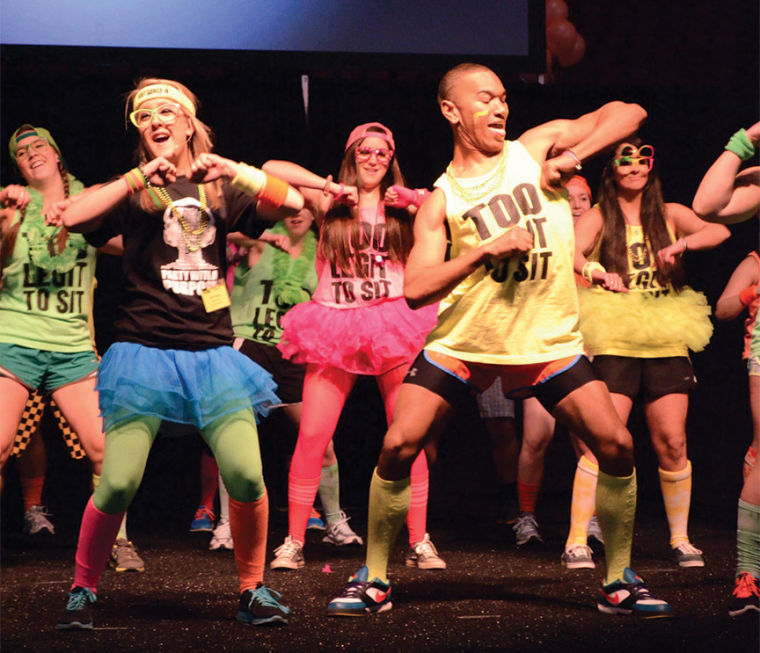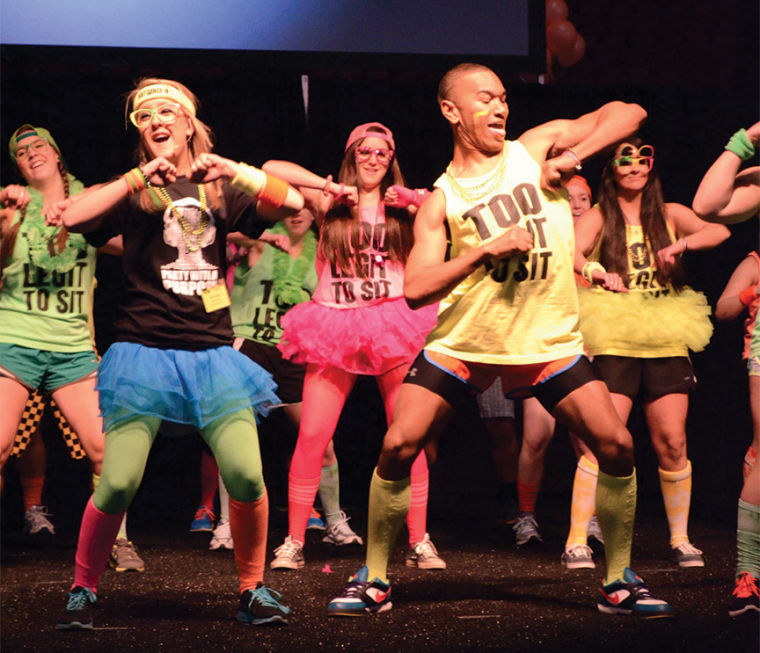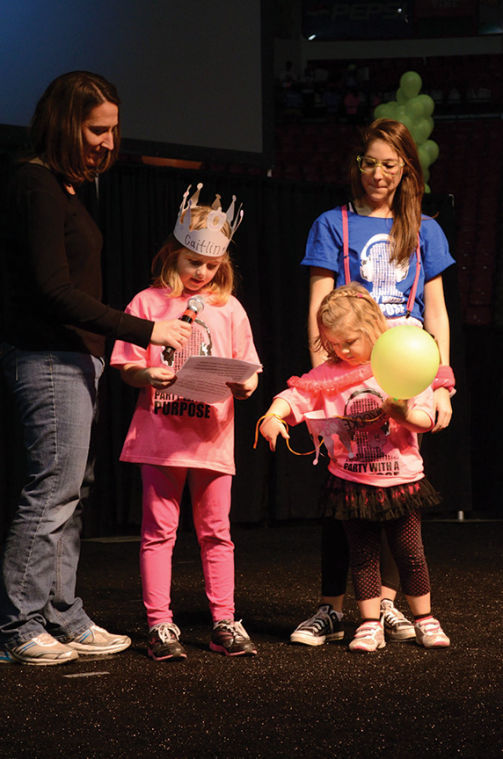Four days before Brooke Rosenberg’s second birthday, a blood test revealed the unthinkable — what seemed to be a rash and ear infection were acute myeloid leukemia.
“You’re ready to celebrate a birthday, [then] to hear she has cancer, that kind of gets your mind thinking: Is this the last birthday we’re going to have with her?” said Chris Rosenberg, Brooke’s father. “It turns your whole world upside down.”
But thanks to her then-5-year-old sister Caitlin, who donated bone marrow, Brooke, now 4, is healthy again. She’s one of 20 “Miracle Kids” who shared their stories Saturday afternoon with about 1,500 students participating in the university’s fourth annual Terp Thon. Dozens of students took over Cole Field House to dance for 12 hours straight, raising more than $306,000 for the Children’s National Medical Center in Washington.
Terp Thon — one of more than 180 collegiate dance marathons helping raise money for Children’s Miracle Network hospitals across the country — may be relatively new, but it has broken national fundraising records in its first four years, said Melanie Modula, the group’s executive director.
In 2010, the event raised more than $56,000, becoming the most successful first-year dance marathon program in the country. Terp Thon also became the first program to reach six figures by its second year, gathering $140,000, doing so again in its third, when students raised $270,000. Other universities’ programs have since surpassed records set by Terp Thon, Modula said, but the friendly competition makes for an overall success for the children’s hospitals.
“It’s definitely something that’s sweeping the nation,” Modula said of the dance marathon trend. “It’s fun to see that we’re setting the bar, but other people are crushing it, which is great. It’s all for a good cause, so the competition is good competition.”
From noon to midnight, students played games and danced while dressed in neon T-shirts, tutus and glasses, upholding their pledge of standing on their feet for 12 hours for those who cannot — a concept Chris Rosenberg said sick children at the hospital appreciated.
“When you’re in the hospital with your children, you’re kind of in solitude,” Rosenberg said. “There’s really not a whole lot of contact with the outside world. So to know that there’s people out there who care long enough to do what you guys are doing really is awesome for the kids back at the hospital.”
In between dance routines, other children and families shared their experiences with the hospital and its doctors, which junior Harrison Edney said helped him understand the cause and the true impact of the fundraising.
“You get a great feeling being here, seeing the kids,” said Edney, an economics major, who also participated in Terp Thon in 2012.
About 88 percent of children with cancer are treated at Children’s Miracle Network Hospitals, though the dance marathon proceeds go toward a variety of hospital units, research and other areas of need. Even the smaller donations, such as new flat-screen televisions for clinic waiting rooms, can make a difference, said Dr. Sally Evans, the Washington hospital’s chief of pediatric rehabilitation medicine.
“It seems to me my patients are a little happier having something to do,” said Evans, who treated or knew many children who shared their stories at the event.
For Alexander and Tess Theodorakos, 9-year-old twins who were diagnosed with cerebral palsy, simple donations such as new toys made the hospital more cheerful.
“The money doesn’t always go to the really expensive medical equipment stuff,” Alexander said. “It also goes toward the toys for therapy. Like for example, there were beanbag frogs that were missing eyes and somebody drawed their eyes on with a Sharpie. And with the money raised, they were able to replace the frogs, and these beanbag frogs actually had eyes.”
Cerebral palsy is permanent, and doctors and researchers have yet to find a cure for the motor condition that causes physical disability.
“But we can treat the symptoms,” said Danica Theodorakos, the twins’ mother. And through the Children’s Miracle Network hospitals, which benefit from the dance marathons, her children have had success with therapy and surgeries.
“Dr. Evans wants them to be just like everybody else,” Theodorakos said. “She really cares. And that’s the kind of doctors they have at Children’s Miracle Hospitals.”
Several students, including Modula, said they joined Terp Thon because they had heard about Penn State’s 46-hour-long THON, the oldest and longest dance marathon in the country.
Her older brother, who participated in THON as a morale dancer, inspired Modula. While she didn’t want to go to the same school as him, she wanted to be active in fundraising — so she joined Terp Thon immediately when she found out about the similar organization.
“The scale of what has happened in four years is almost unbelievable at times,” said Modula, who was part of the inaugural Terp Thon in 2010. “To see the growth in fundraising and attendance — and just the scale of the event itself and the aesthetics of how far it’s come along — is incredible.”
For Caitlin Rosenberg, now eight, who said she hadn’t known what bone marrow was but would do anything to save her sister, Terp Thon and similar events provide motivation and the enthusiasm children need to recover.
“I remember when I woke up [from the bone marrow transplant], I did not even want a Popsicle — I just wanted to see Brooke,” Caitlin told the neon-colored crowd, remembering when her younger sister waited for her with a new American Girl doll in hand as a thank-you present. “Thanks for dancing for kids like us.”
Members of the Morale Committee taught about 1,500 Terp Thon participants sections of a dance routine to keep them motivated throughout the 12-hour event.
A student signs a board covered in fraternity and sorority letters at Terp Thon 2013 on Saturday
Caitlin Rosenberg (left) reads during Saturday’s fourth annual Terp Thon about donating bone marrow to her sister, Brooke (right).






